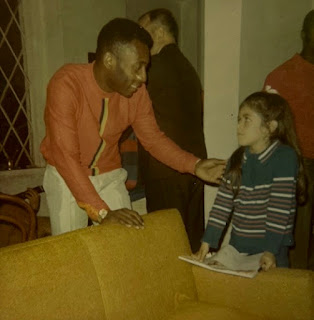NACAP 2009
The International Association for Computing and Philosophy is pleased to announce the keynote speakers for its 2009 North American conference to be held June 14th-16th at Indiana University.
This year's Herbert A. Simon Keynote Address will be presented by Bill Bechtel (University of California, San Diego): "Networks at Multiple Levels: Understanding Circadian Phenomena."
The Douglas C. Engelbart Keynote Address will be presented by Olaf Sporns (Indiana University): "Network Neuroscience - A New Perspective on Brain Function."
NACAP 2009 will additionally feature special sessions devoted to
- networks in logic instruction,
- the social aspects of networks, and
- research related to philosophy and computing currently underway at Indiana University.
IACAP President, Luciano Floridi, will also present his annual address, titled this year, "A Distributed Model of Truth for Semantic Information."
Submissions are welcome on all aspects of the conference theme, Networks and Their Philosophical Implications, and on other topics that are a regular part of the IACAP conference series . The submission deadline is February 1st, 2009. Details are outlined in the CFP below.
NACAP 2009 will follow immediately after the annual meeting of the Society for Philosophy and Psychology to be held at Indiana University, June 12th-14th.
Additional information will be posted on the conference website as it becomes available.
Keynote Abstracts
The Herbert A. Simon Keynote Address
Networks at Multiple Levels: Understanding Circadian Phenomena
Bill Bechtel (University of California, San Diego)
Research on biological mechanisms, including brain mechanisms, often begins in a highly reductionistic fashion: identifying components at the lowest available level of analysis and establishing that they play a critical role in the phenomenon of interest. One such phenomenon, circadian oscillations in various behaviors and physiological processes in organisms that signal their coordination with the day-night cycle of our planet, was shown in the mid-20th century to be controlled endogenously. That is, from the results of such manipulations as keeping organisms in constant darkness, it could be inferred that they must possess internal clocks. Researchers hastened to determine where various organisms' clocks were located (in mammals, the brain's suprachiasmatic nucleus or SCN) and even the responsible genes (in animals, Per). In 1990 a circadian clock mechanism was proposed involving a delayed feedback loop in which the protein synthesized from Per, PER, re-enters the nucleus and inhibits its own synthesis, resulting in a rise and fall in concentrations of per across a period of about 24 hours. Researchers soon found, however, that a host of other genes and proteins are essential components of the clock. Moreover, it was determined that the timing of the intracellular delayed feedback mechanism showed considerable variation across individual SCN cells, suggesting that the cells were organized into a complex, interactive network in which synchronization was crucial to accurate timekeeping. Thus, understanding circadian phenomena would require understanding how intercellular networks might function. Moreover, researchers increasingly recognized that the overall system comprised multiple networks organized and interacting hierarchically. They had long known that the SCN must receive input from photoreceptors in the eye in order to coordinate with day-night cycles. and that the SCN must send outputs to a number of physiological systems to affect those systems as well as behaviors of the whole organism. More recently it was discovered that these peripheral systems had their own oscillators, which received the SCN's outputs and dampened in their absence. Researchers initially regarded these as slave oscillators, but evidence accrued that peripheral oscillators can affect the operation of the SCN itself. Similarly, it now appears that in addition to photoreceptors sending output to the SCN, their own activity is modulated by the SCN. Thus, the SCN is a network of synchronized neurons that affects, and is affected by other neural components of the overall mechanism responsible for circadian phenomena. Understanding the complex dynamics in such a hierarchy of neural and molecular networks requires modeling at multiple levels.
The Douglas C. Engelbart Keynote Address
Network Neuroscience – A New Perspective on Brain Function
Olaf Sporns (Indiana University)
Recent advances in network science have generated much progress in our understanding of the structure and function of many networked systems, ranging from transportation networks, to social networks, the internet, ecosystems, and biochemical and gene transcription pathways. Network approaches are also beginning to be applied to the brain, at several levels of scale from cells to entire brain systems. We now know that brain networks exhibit a number of characteristic topological features, including small-world attributes, modularity, and hubs. For the first time, we can relate these structural aspects of brain networks to the brain's global performance in cognition and behavior. The talk will review recent work on how complex brain networks are organized, and how their topology constrains and shapes their capacity to process and integrate information. Particular emphasis will be on the structure of the human brain and on what this structure can possibly tell us about human cognition.
The 2009 IACAP Presidential Address
A Distributed Model of Truth for Semantic Information
Luciano Floridi (University of Hertfordshire and University of Oxford)
This talk develops a correctness theory of truth (CTT) for semantic information. After the introduction, in section two, semantic information is shown to be translatable into propositional semantic information (i). In section three, i is shown to be polarisable into a query (Q) and a result (R), qualified by a specific context, a level of abstraction and a purpose. This polarization is normalised in section four, where [Q + R] is transformed into a Boolean question and its relative yes/no answer [Q + A]. This completes the reduction of the truth of i to the correctness of A. In sections five and six, it is argued that (1) A is the correct answer to Q if and only if (2) A correctly saturates (in a Fregean sense) Q by verifying and validating it (in the computer science's sense of "verification" and "validation"); that (2) if and only if (3) [Q + A] generates an adequate model (m) of the relevant system (s) identified by Q; that (3) if and only if (4) m is a proxy of s (in the computer science's sense of "proxy") and (5) proximal access to m commutes with the distal access to s (in the category theory's sense of "commutation"); and that (5) if and only if (6) reading/writing (accessing, in the computer science's technical sense of the term) m enables one to read/write (access) s. Section seven provides some further clarifications about CTT, also in the light of the semantic paradoxes. Section eight draws a general conclusion about the nature of CTT as a theory for system designers not just system users.
Call for Papers
Deadline: February 1st 2009 (firm)
In recent years, across several different academic disciplines, including biology, computer science, cognitive science, informatics, philosophy and psychology, a shift in the study of complex systems is readily visible. This shift away from a focus on the individual components of a system to the interrelations between them has provided the groundwork for what might broadly be called a "network" perspective, as it has become increasingly clear that simple components can produce astoundingly complex and varied behavior when they work in consort. Evidence for this observation is seen everywhere from biological neural networks, stigmergic systems, and animal behavior to networked computing, social networking, and dynamic systems. This conference will explore the philosophical implications of this network perspective as it applies to the broader scope of topics studied by our association.
To this end, we are interested in receiving submissions that explore themes in the intersection of philosophy and computing insofar as they
involve, for instance:
- Academic/Scientific Citation Networks
- Artificial Neural (Connectionist) Networks
- Biological Neural Networks
- The Internet / World-Wide Web
- Multi-Agent Reasoning and Decision-Making
- Networked Computing
- Networked Robotics / Swarm Intelligence
- Semantic Networks
- Social Networking
- Stigmergic Systems
- Ubiquitous Computing
We welcome submissions for papers, panels and demonstrations of computing and philosophy applications. Papers and demonstrations will be allotted 40 minutes, including time for commentary and questions (25 minutes for presentation, 5 for commentary and 10 for Q&A). 120-minute slots are available for panels and can be divided as the panelists see fit.
For papers, please limit submission length to 3,000 words, keeping in mind that the IACAP discourages participants from reading their papers to the audience. (Many presenters prepare slides using PowerPoint or some other software package. However, these need not be submitted with your original paper.) Include also a 250-word abstract.
The IACAP discourages "show-and-tell" demonstrations, but welcomes submissions that show a new and interesting application of computers to philosophy. Submissions in this category should consist of a 1,500-word abstract outlining what is innovative about the application and the questions pertinent to philosophy that your demonstration will raise.
For panels, please submit a 1,000-word summary of the panel as a whole, along with 300 to 500-word abstracts for each of its various components.
The conference will be accepting electronic submissions appropriately prepared for blind review on or before February 1st, 2009. Additional
details will be posted to the conference website as they become available.
This conference is one of several regional conferences associated with the International Association for Computing and Philosophy. To learn more about the IACAP, including its other conferences and membership details, visit the organization's website.
Tony Beavers
2009 NACAP Program Chair
-----------------------------
Anthony F. Beavers, Ph.D.
Professor of Philosophy /
Director of Cognitive Science
The University of Evansville
http://faculty.evansville.edu/tb2/




Comments
Post a Comment